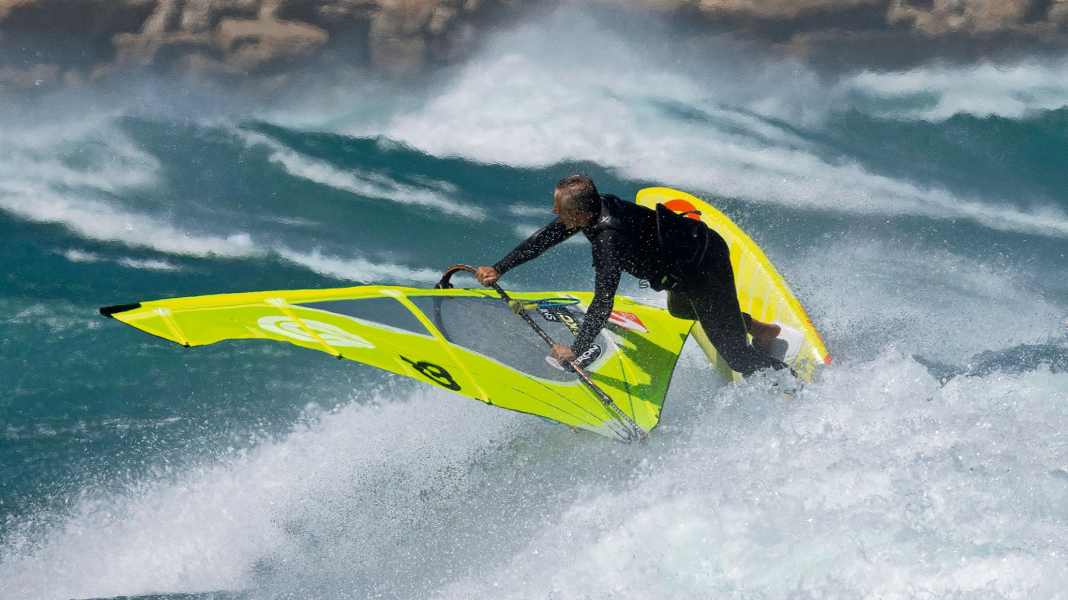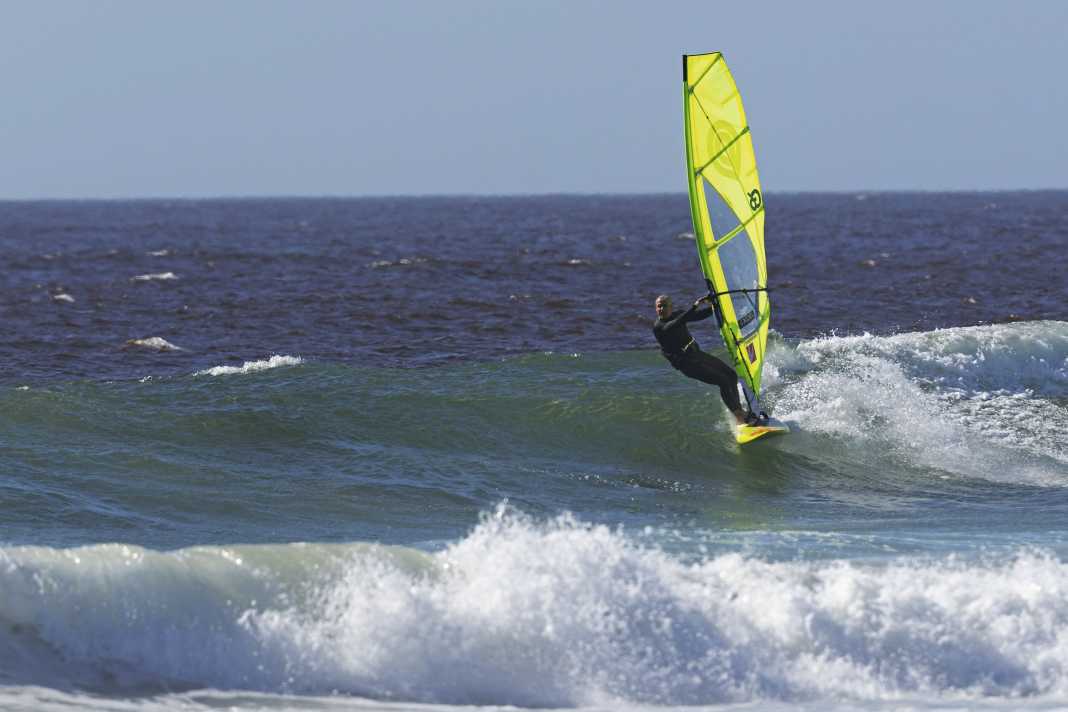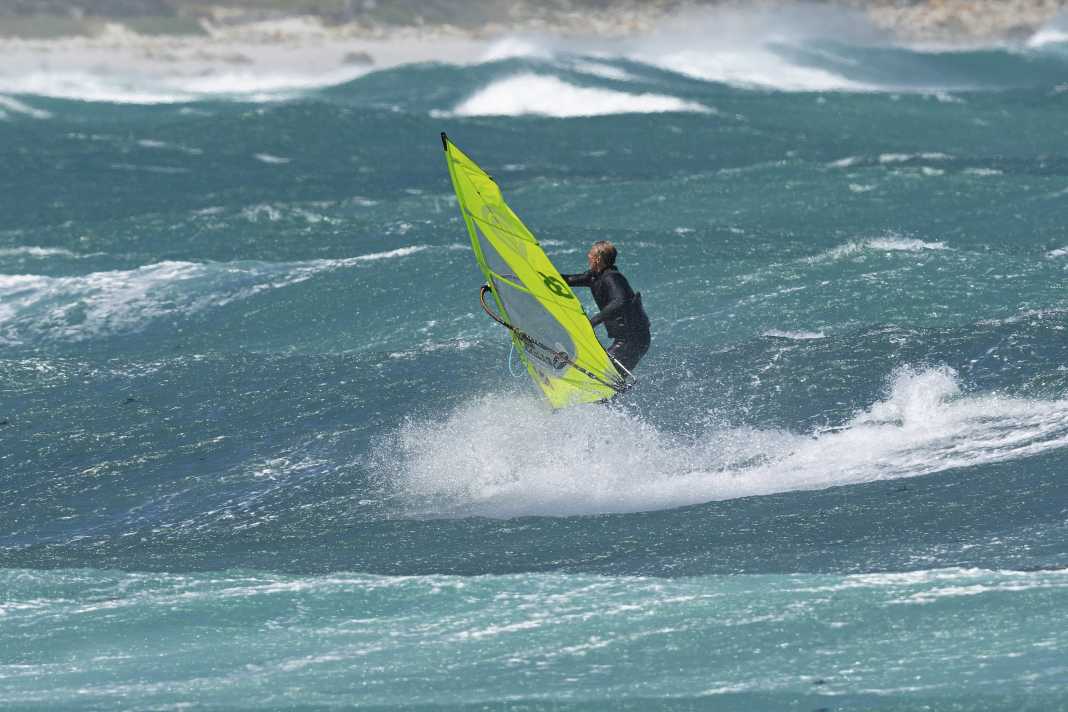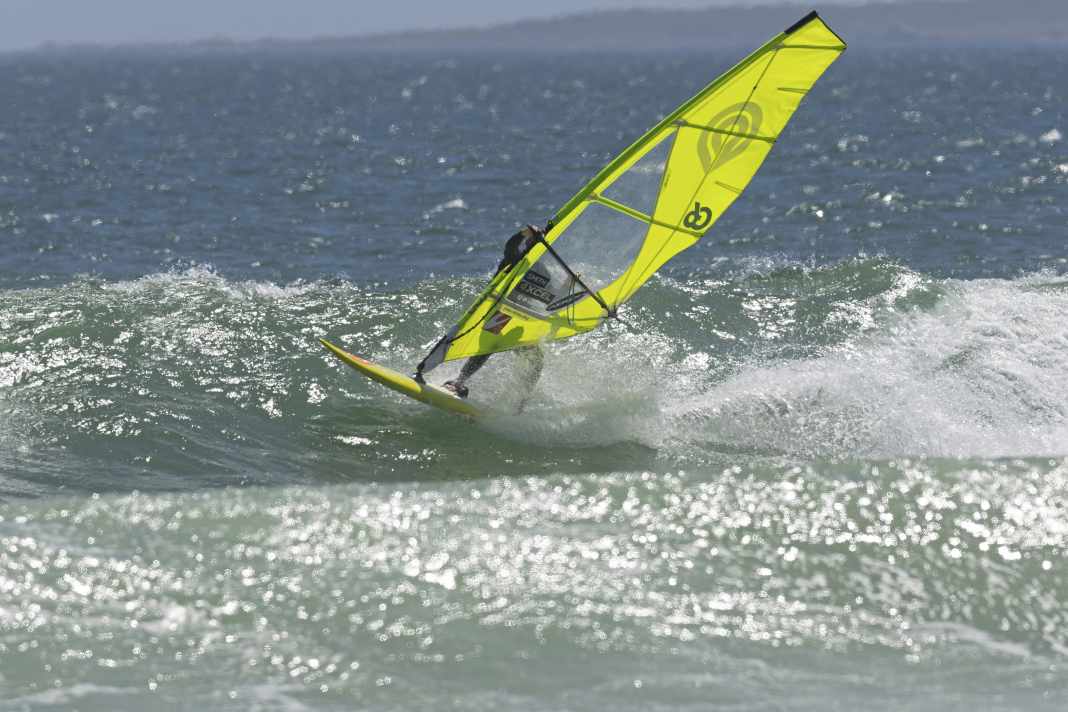
The more onshore the wind, the more difficult it is to ride waves frontside, i.e. to leeward. With backside turns, it's exactly the opposite - the "worse" the conditions, the easier this technique becomes. A good backside turn also looks very stylish. Wave trainer Peter Garzke shows you how to master it.
Waveriding basics
In general, there are two ways to ride a wave in windsurfing: If you initiate the bottom turn over the leeward edge and with your belly towards the wave, this is called "frontside waveriding". With backside waveriding, the bottom turn is initiated upwind, i.e. via the heels, with the back facing the wave during the entire wave ride.
The wave usually decides whether a frontside ride to leeward or a backside ride to windward makes more sense. For example, if the wave is already starting to break downwind of you, it makes little sense to initiate a frontside turn, as you will then often end up directly in white water. Instead, the aim is to find an open and steep wave shoulder - and the wave just as often offers this upwind.
Another argument in favour of a backside turn is the wind strength. While you need a good pull in the sail for a powerful frontside turn, backside rides are much more successful in slack conditions at the planing limit, as the sail is additionally charged when turning to windward - the airstream and the wind actually blowing add up. Last but not least, the issue of maintaining height: While you lose height with every frontside ride, you actually gain a few metres when backside waveriding.

More riding technique in the wave:
The backside turn
A good backside turn is not that difficult. It can be practised in all wind directions from side- to onshore, whether knee- or logohigh. The bottom turn differs fundamentally from frontside waveriding: while you enter the frontside turn by pushing your body forward and pulling on the sail, you initiate the backside bottom turn using your heels. The sail does not fulfil the task of providing traction, but should instead be positioned as neutrally as possible. There are two basic techniques for the backside cutback - with the sail upright or laid flat. The flattened version, which we will focus on here, is usually more radical and tighter.






The steeper, the more radical
As with all wave rides, a round shoulder is allowed at the beginning, but a lot of speed is required on the approach. The backside turn looks particularly impressive when you hit a steep lip or a section coming towards you from upwind. Our photo rider Peter Garzke definitely knows how to do it.



The Backside Aerial
The ultimate upgrade for every upwind wave ride is the backside aerial. The good thing is that in terms of technique, the aerial hardly differs from the normal backside cutback. While backside turns can be done well even with very little wind, the backside aerial requires steam.






You should always keep the crucial sticking point in mind: The backside air is not a jump, but the result of a lot of speed and the counter pressure of the flat sail.
Tip: You can also practise the backside air in isolation on flat water or in the swell. When riding out against the wave, you can get the necessary height and feel your way up. Strictly speaking, the move is nothing more than a shove it on the wave face.
The backside air is the result of a lot of speed and the counter-pressure of the flattened sail."
Alternative: The backside snap
There are reasons to ride the backside cutback with the sail upright, for example when the wind and board speed are so low that you can't really support yourself on the flat sail. But pros also choose this technique for moves that require an upright body position - such as the reverse, a kind of grubby on the wave face.






